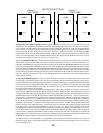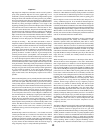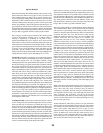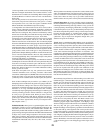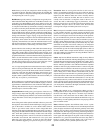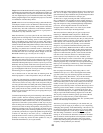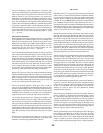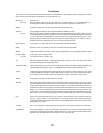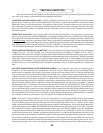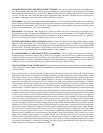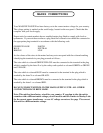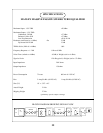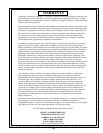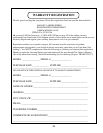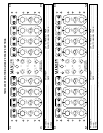IT MAKES NOISES WHEN THE FRONT PANEL IS TAPPED - An easy one. Some tubes become microphonic over
time. That means they start acting like a bad microphone. Vibration has caused the supports for the little parts in the tube to
loosen and now the tube is sensitive to vibration. Easy - Replace the tube. Which one? The one that makes the most noise when
you tap it. Usually this will be one of the smaller (gain stage) tubes closest to the front. The Massive Passive will have to be
on, connected and speakers up but not too loud for the sake of your speakers.
IT GOT HISSY - Also easy. This is again a common tube symptom. You could swap tubes to find the bad boy, but an educated
guess is OK too. Generally the first tube in the path is the one with the most gain and dealing with the softest signals. The
usual suspect is the shorter tubes - the 5751/12AX7 voltage amplifiers. You may find that you need to choose the quietest
tube out of several of that type - like we do at the factory.
DISTORTION - This might be a tube. Swapping is a good way to find out. It may be a wiring thing or mismatch as well.
Wiring problems usually accompany the distortion with a major loss of signal. Mismatches are a bit tougher. The Massive
Passive has a high input impedance and low output impedance that can drive 600 ohm inputs of vintage "style" gear. Best
place to start is check your settings and meters. It may not be your first guess.
GETTING DISTORTION WHEN WE BOOST A LOT. No doubt. The Massive Passive by itself should have enough
headroom so that mega-boosts won't cause clipping in it, however, it can push out about +37dBv, 10 or 15 dB more than
most gear can accept without clipping. You're gonna have to turn something down, whether it is the signal feeding the EQ,
the "Gain Trims" on the EQ's front panel or the input levels of the next piece. That last option may not help if there is any
op-amps before its own volume control and unfortunately that is pretty common.
DC OR SOMETHING AT THE OUTPUT THAT IS INAUDIBLE - The 1/4" unbalanced outputs have a frequency
response that goes way down to below 1 Hz. A little very low frequency noise may be seen as speaker movement when
monitors are pushed to extreme levels. The XLRs do not exhibit this because the transformers filter below 8 Hz. Also the
unbalanced outputs do not like long cheap high capacitance cable. Occasionally a very high frequency oscillation (200 kHz
to 400 kHz) may occur in these conditions. Once again use the XLR outputs. Problem solved.
THE GAIN SEEMS OUT OF CALIBRATION - Wait a bit and see if it just needs to warm up. There are only two trimmers
inside and they are for adjusting the gain of the two channels up or down a few dB. More than that and you either have a bad
cable or bad tube.
Once in a while we get a call from a client with a "digital studio" with confusion about levels. They usually start out by using
the digital oscillator from their workstation and finding pegged VU meters the first place they look and they know it can't be
the workstation. Even a -6 level from their system pegs the meters. Some of you know already what 's going on. That -6 level
is referenced to "digital full scale" and the computer might have 18 or 18.5 or 20 dB of headroom built in. That -6 level on
the oscillator is actually a real world analog +12 or +14 and those VU meters don't really go much further than +3. There are
a few standards and plenty of exceptions. One standard is that normal (non-broadcast) VU meters are calibrated for 0VU =
+4 dBm =1.228 volts into 600 ohms (broadcast is sometimes +8dBm). Another standard is that CDs have a zero analog
reference that is -14 dB from digital full scale or maximum. This allows sufficient peak headroom for mixed material but
would be a bad standard for individual tracks because they would likely distort frequently. This is why digital workstations
use higher references like 18 and 20 - to allow for peaks on individual sounds. It may be too much in some cases and too little
in others. Add two other sources of confusion. Peak meters and VU meters will almost never agree - they are not supposed
to. A peak meter is intended to show the maximum level that can be recorded to a given medium. VU meters were designed
to show how loud we will likely hear a sound and help set record levels to analog tape. By help, we mean that they can be
only used as a guide combined with experience. They are kinda slow. Bright percussion may want to be recorded at - 10 on
a VU for analog tape to be clean but a digital recording using a good peak meter should make the meter read as high as possible
without an "over". Here is the second confusion: There aren't many good peak meters. Almost all DATs have strange peak
meters that do not agree with another company's DAT. One cannot trust them to truly indicate peaks or overs. Outboard digital
peak meters (with switchable peak hold) that indicate overs as 3 or 4 consecutive samples at either Full Scale Digital (FSD)
are the best. They won't agree with VU meters or Average meters or BBC Peak Programme (PPM) meters either. Each is a
different animal for different uses. When in doubt, use the recorder's meters when recording - they "should" be set up and
proper for that medium. Also important - if your DAC has gain trims, and these trims are "out" it can cause distortion,
confusion, and a variety of mis-matches. If you don't have calibration tapes or sources - get them, and if you do have them
- learn how to use them, and definately use them. Don't guess, especially if you suspect a significant problem. This is not the
type of thing "phone support" is usually good at finding. We have seen guys spend thousands on new gear only to find out
a little screwdriver trim would have solved their problems.
27



